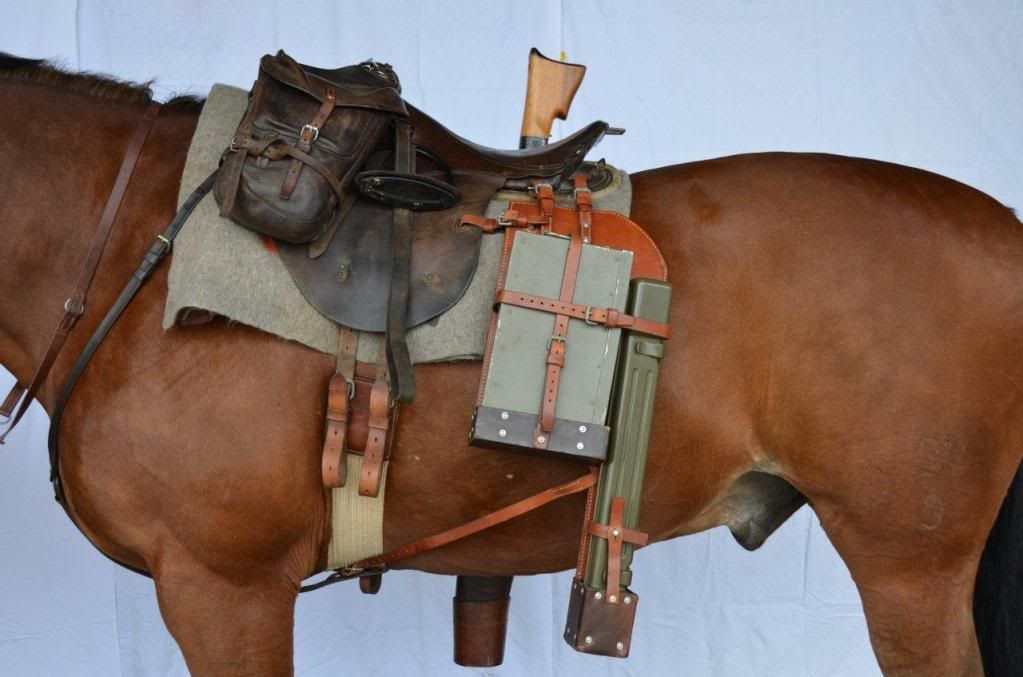
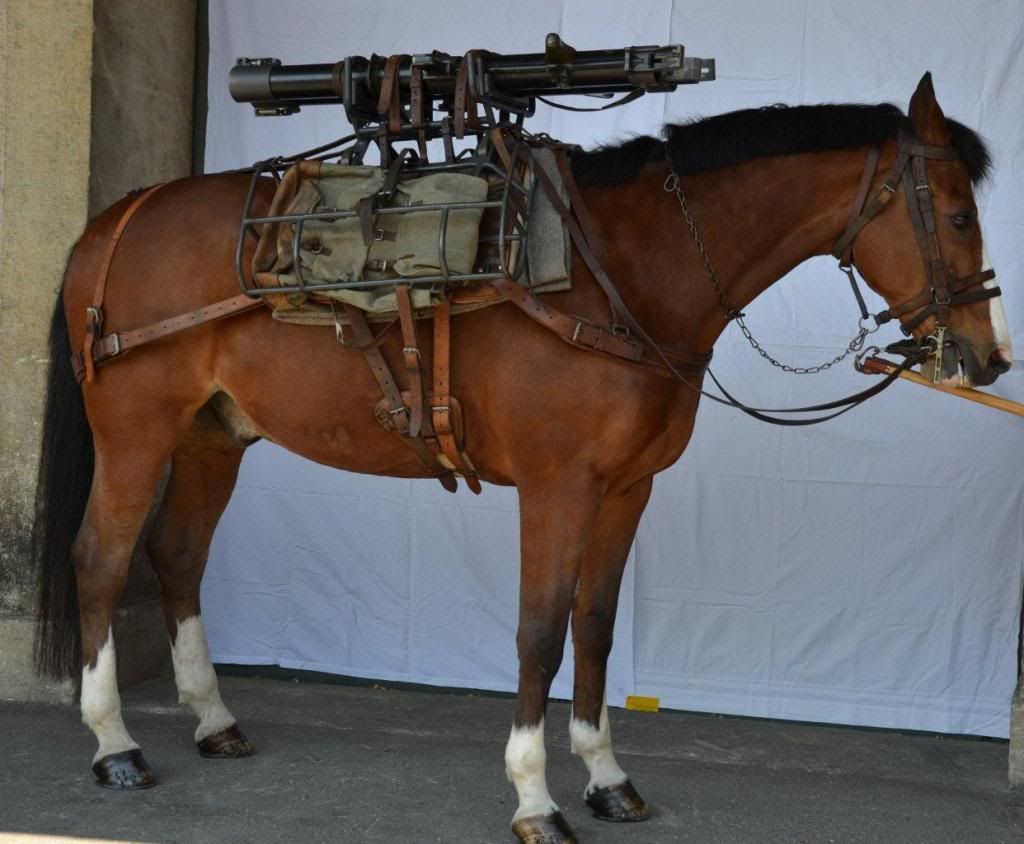


Tom, any chance Mr. Lehmann might be induced to register and comment?Tom Muller wrote:The excellent photos are courtesy of Mr. Ulrich Lehmann in Berne, Switzerland.

We have seen in the forum photos of buckets in use by the Angola Dragoons of Portugal with their HK G3 rifles.Pat Holscher wrote:Interesting bucket. I wonder if this is the only bucket purposely designed for a post WWII automatic rifle?
We have seen in the forum photos of buckets in use by the Angola Dragoons of Portugal with their HK G3 rifles.george seal wrote:
Interesting bucket. I wonder if this is the only bucket purposely designed for a post WWII automatic rifle?

The Portuguese buckets would have been adapted from old Mausers.Pat Holscher wrote:I believe that Switzerland had true cavalry formations until the early 1970s. It makes sense really, given their mountainous terrain. By the same token, I believe that Switzerland still retains bicycle troops. A few years back a very old pattern of bicycle was replaced with a modern mountain bike and it proved to be a bit of a controversy.george seal wrote:
We have seen in the forum photos of buckets in use by the Angola Dragoons of Portugal with their HK G3 rifles.
It's interesting to see the STg57. I'm familiar with it's export version in 7,62 Nato caliber, the Sig 510, still in some use in Chile (and possibly Bolivia). I understand the Stg57 magazine came from an earlier light machine gun. The Sig510 also has a diferent wooden buttstock.
I would be interesting to know what role the Swiss Dragoons had. Where they regular cavalry? or were they part of the mountain troops? I understand the Swiss had mounted recon troops for use in mountains.
The bucket in use by the Portuguese in Angola was actually an old pattern for a bolt action rifle that was just pressed into use. This bucket may be unique in that it might be the only bucket actually designed for a battle rifle or assault rifle and adopted as a pattern. I'm not aware of any others, but of course that doesn't mean there aren't any.
The Stg 57 is an interesting rifle. It was very large and heavy, and is a bit unique in that it was designed to fill the role of a rifle and light machinegun, rather than filling the role of a rifle and submachinegun (although the Stg 43 was supposed to originally fill the role of rifle, smg, and lmg, but never did). They have a good reputation in print, but the only two former soldiers I've ever known who carried them, one Swiss and one Chilean, have unkind memories of them. The Swiss soldier, who later served as a US Marine, really hates the Stg 57.
Tom, I must have missed those. I'll go back and find them.Tom Muller wrote:Pat thanks a lot again for posting! Could you please post the other photos as well, showing the lmg on the off side and the tripod mounted on pack saddle).
He can post in German if he'd like. We can figure it out with Google translator. No problems, we'd love to have him.Tom Muller wrote:Pat, I'll ask Mr. Lehmann to register, but it might be difficult because of the language barrier, as I do not know how his command of English is.
It reminds me of the Fallschirmgewehr also. Particularly because that rifle was about the only other full sized assault rifle that I think was ever made. It fired the 8x57, and the Stg 57 fired the 7.5 Swiss, both pretty big cartridges.Tom Muller wrote:Stg57: a friend of mine who served with me, was a former officer in the Swiss Army. He said the Stg57 was very reliable and accurate, but way too heavy and clumsy. I fired it a few times and it reminded me of photos of the old "Fallschirmgewehr" of WWII (just the enormous size!).
Tom
Thanks for pointing that out. I noticed that the pads looked like leather but thought it must be a photo illusion. It's interesting that these pads were designed with a purpose in mind that is exactly opposite to the desired function of most other pads: traction. Are the stirrup loops on these saddles closed loops?Tom Muller wrote:
Note the leather applications in the stirrups. I will send some photos af the Swiss cavalry boots which have a heavy tread sole, a topic we have discussed in another thread. The leather enables you to slip from the stirrups without being "hooked".
Tom

The Swiss, like the former Yugoslavs, practiced the deployment of armor in wooded and mountainous terrain. They must have anticipated that in the event of a major war, they'd face an armored opponent that would attempt the same. I don't know that the Swiss have ever revealed what their strategy was to be in the case of a Warsaw Pact invasion, but part of it must have contemplated that there'd be fighting everywhere in the small Alpine country, and that mounted infantry would encounter enemy armor, while still being needed to rapidly cross Alpine country.george seal wrote:Interesting that the Swiss carried anti tank rockets on horseback. Most units discussed in the forum were for COIN duties (Grey Scouts) or early Homeland Defense (Coast Guard mounted units, Circle C Cowboys). If they needed horses to cross the terrain, why did they expect to find enemy tanks? In what kind of terrain were they employed?
Of course the Northern Alliance used RPGs on horseback, but that is another story...
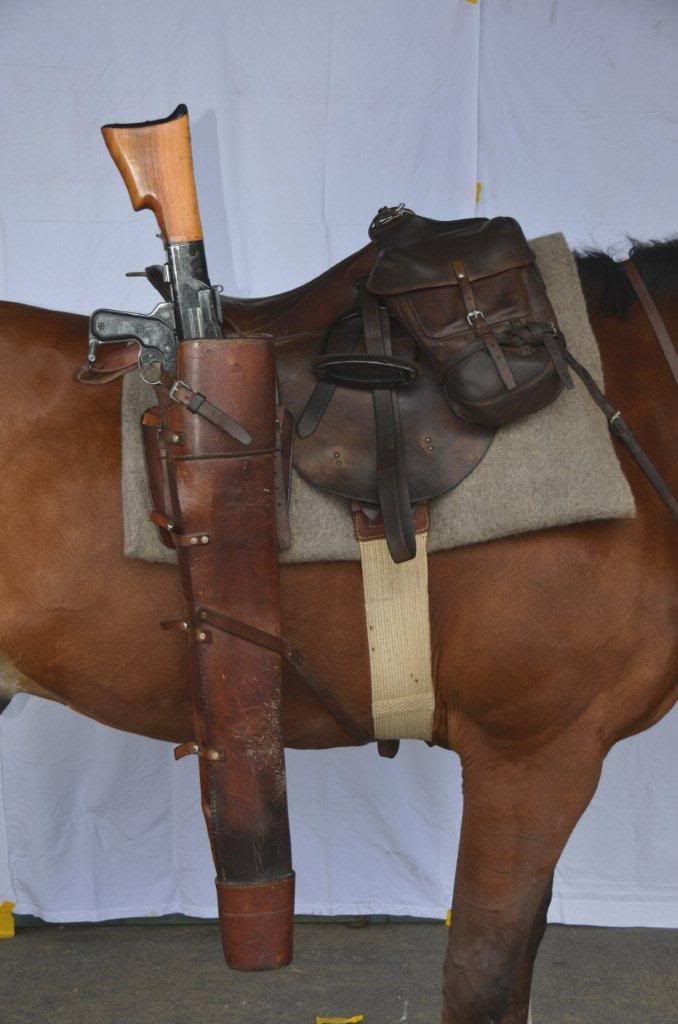

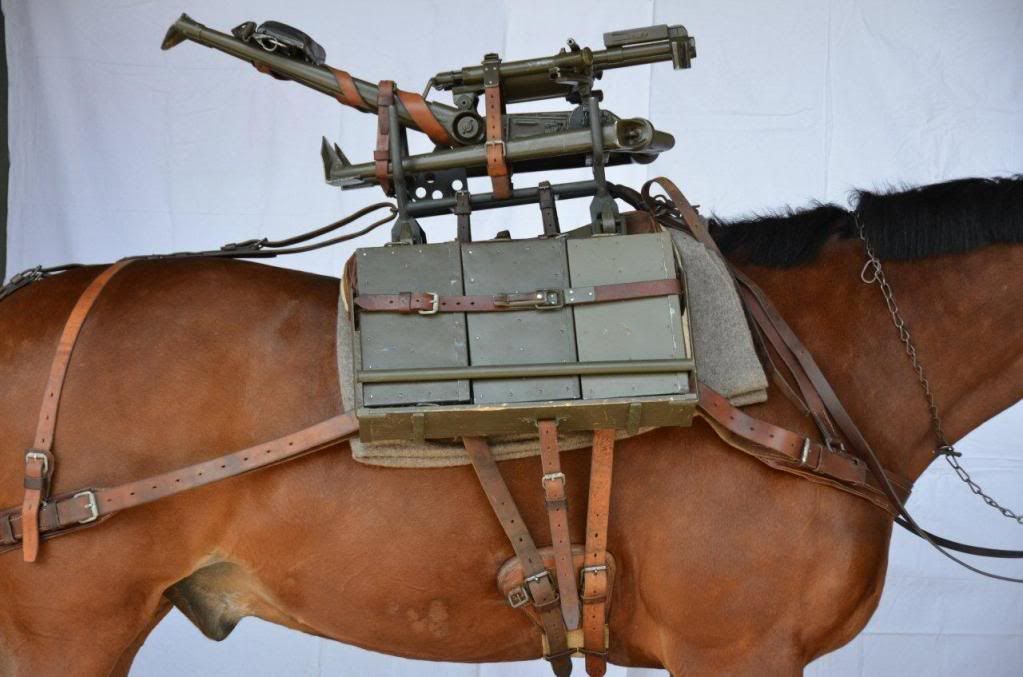
george seal wrote:Interesting that the Swiss carried anti tank rockets on horseback. Most units discussed in the forum were for COIN duties (Grey Scouts) or early Homeland Defense (Coast Guard mounted units, Circle C Cowboys). If they needed horses to cross the terrain, why did they expect to find enemy tanks? In what kind of terrain were they employed?
Of course the Northern Alliance used RPGs on horseback, but that is another story...
On that, I'm sort of reminded of the training NCO at the LAW rocket course at Ft. Sill who started his instructions to us with "Whatever you do. . .don't shoot this at a tank. . .it'll just p*** him off."Tom Muller wrote:george seal wrote:Interesting that the Swiss carried anti tank rockets on horseback. Most units discussed in the forum were for COIN duties (Grey Scouts) or early Homeland Defense (Coast Guard mounted units, Circle C Cowboys). If they needed horses to cross the terrain, why did they expect to find enemy tanks? In what kind of terrain were they employed?
Of course the Northern Alliance used RPGs on horseback, but that is another story...
George,
RPG's come in very handy not just taking out tanks or armored cars.
I hope Mr. Lehmann will register to answer our questions personally.
Tom

Thanks Pat. This makes sense. I did hear a dissertation on the old Yugoslav defense strategy, in Spanish "Defensa Omnimoda Popular" (Something like Popular Omnimode Defense". Of course that didn't work, but I'm pretty it's due to the failure of their political sistem. I'm sure the Swiss could have been successfull carrying it out. Anyway, the Swiss militia sistem did inspire Israel. As for using tanks in non armor terrain, South Africa did that in the thick bush (think French bocage + African savanah) in Angola. Old recoiless anti tank guns (still in use in South America) were also retained by the British for use un Hong Kong and Berlin, because they are efective at short distances (missiles need to fly longer before they are able to explode).Pat Holscher wrote:The Swiss, like the former Yugoslavs, practiced the deployment of armor in wooded and mountainous terrain. They must have anticipated that in the event of a major war, they'd face an armored opponent that would attempt the same. I don't know that the Swiss have ever revealed what their strategy was to be in the case of a Warsaw Pact invasion, but part of it must have contemplated that there'd be fighting everywhere in the small Alpine country, and that mounted infantry would encounter enemy armor, while still being needed to rapidly cross Alpine country.george seal wrote:Interesting that the Swiss carried anti tank rockets on horseback. Most units discussed in the forum were for COIN duties (Grey Scouts) or early Homeland Defense (Coast Guard mounted units, Circle C Cowboys). If they needed horses to cross the terrain, why did they expect to find enemy tanks? In what kind of terrain were they employed?
Of course the Northern Alliance used RPGs on horseback, but that is another story...
The Yugoslavian army proved pretty adept at using armor in mountainous wooded terrain during the break up of Yugoslavia. It was one of the things that proved problematic to NATO, as their armor was used in that fashion and therefore it was hard to detect. That was also the reason why the Yugoslavian army retain old fashioned anti tank guns, as they were useful in taking on tanks in constricted terrains.


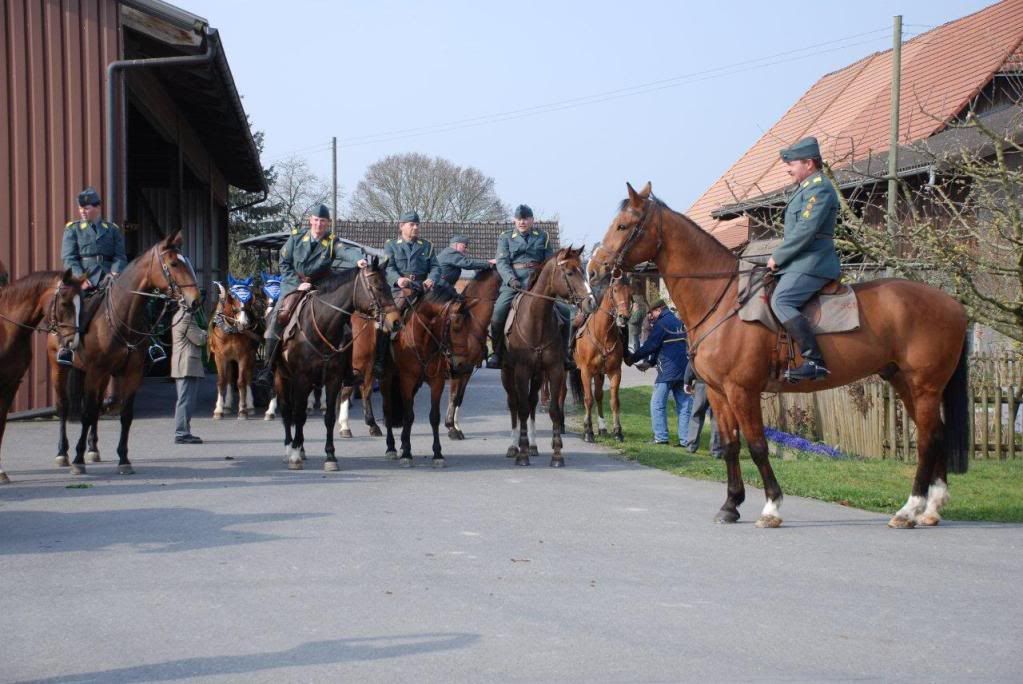
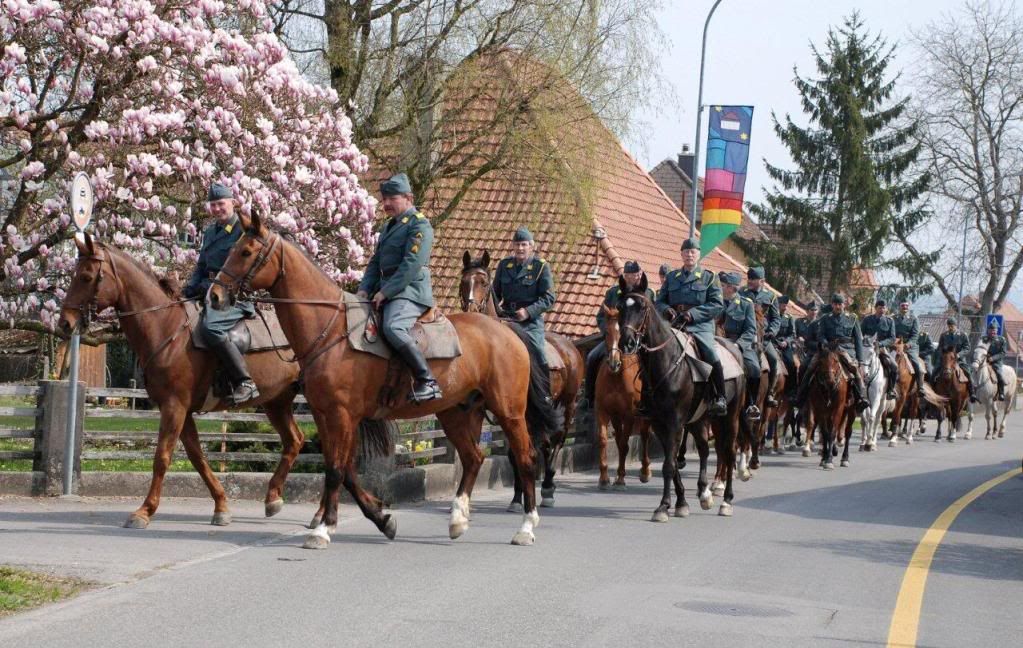

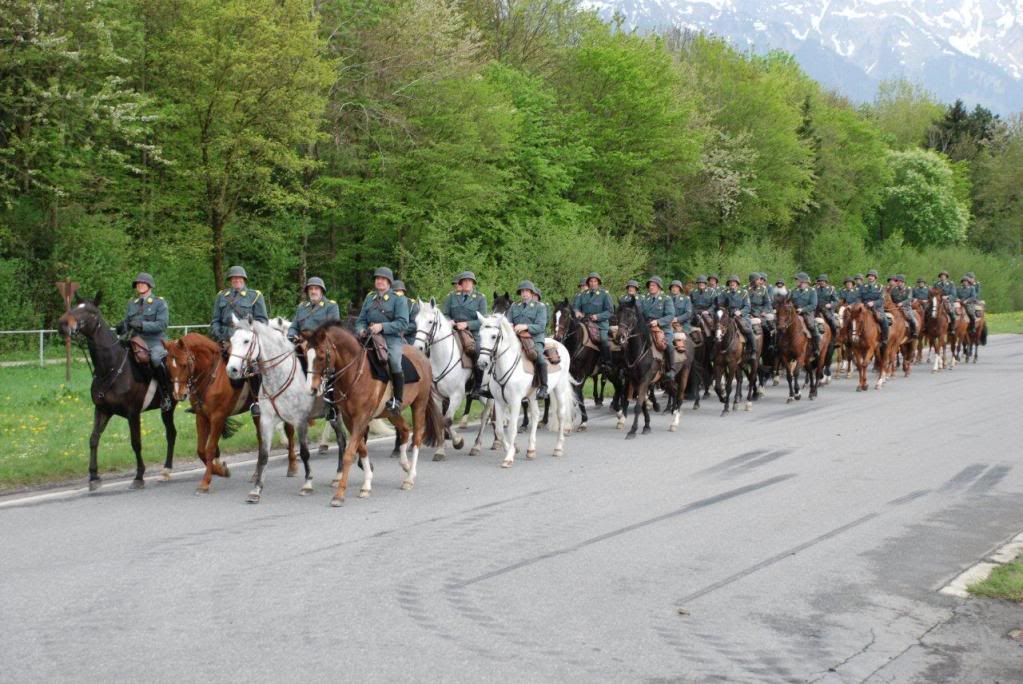
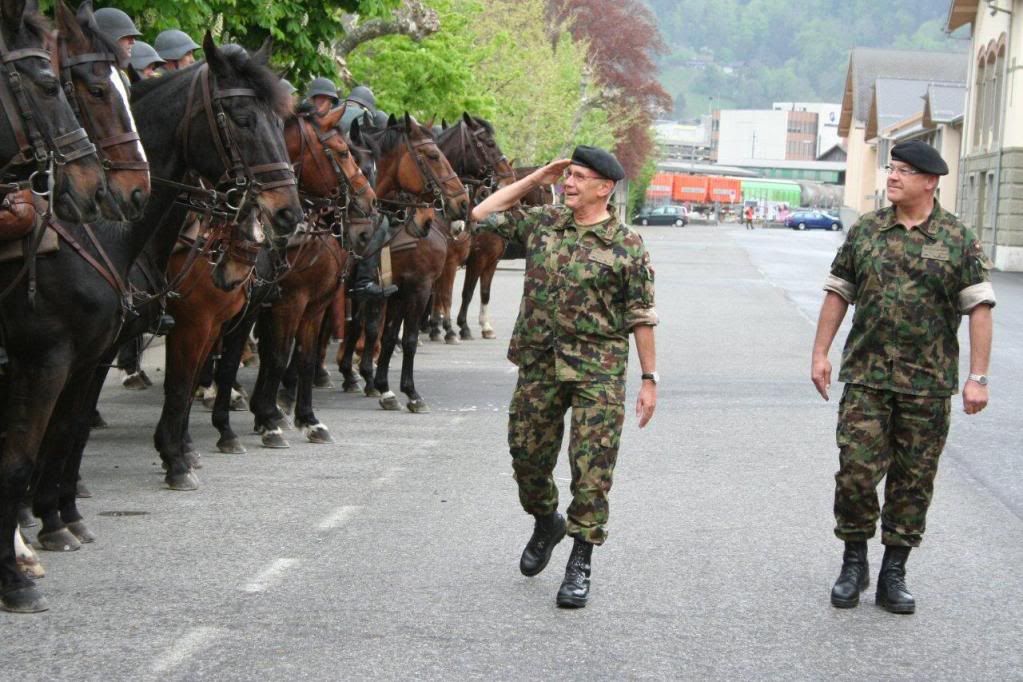
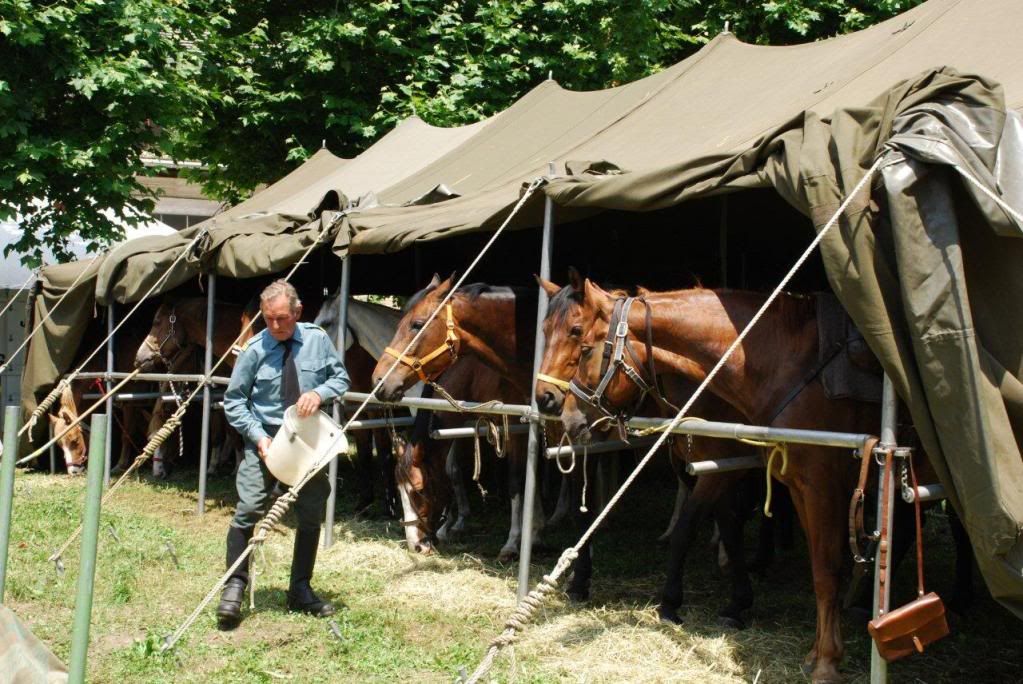
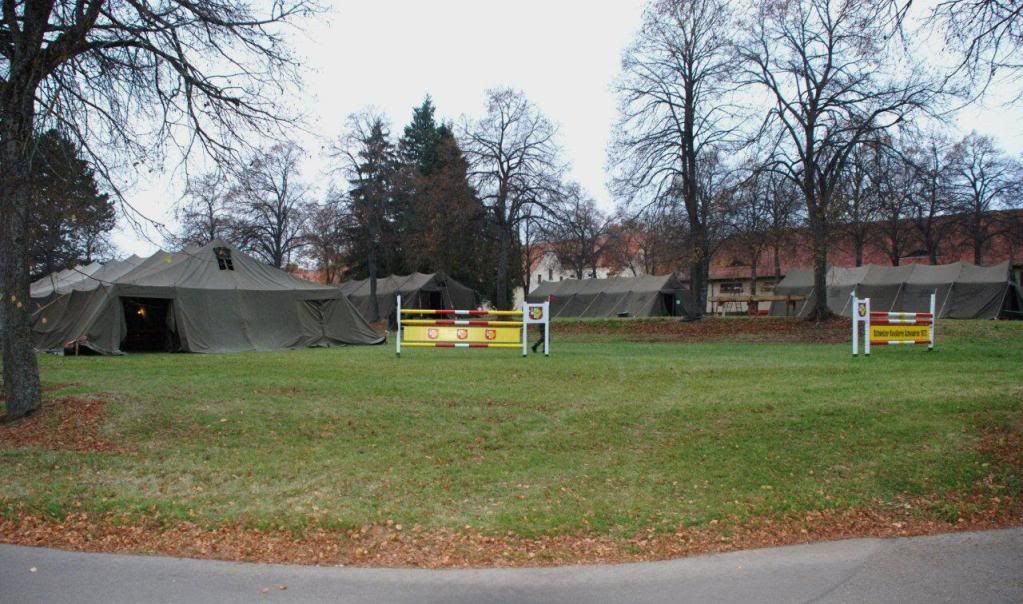
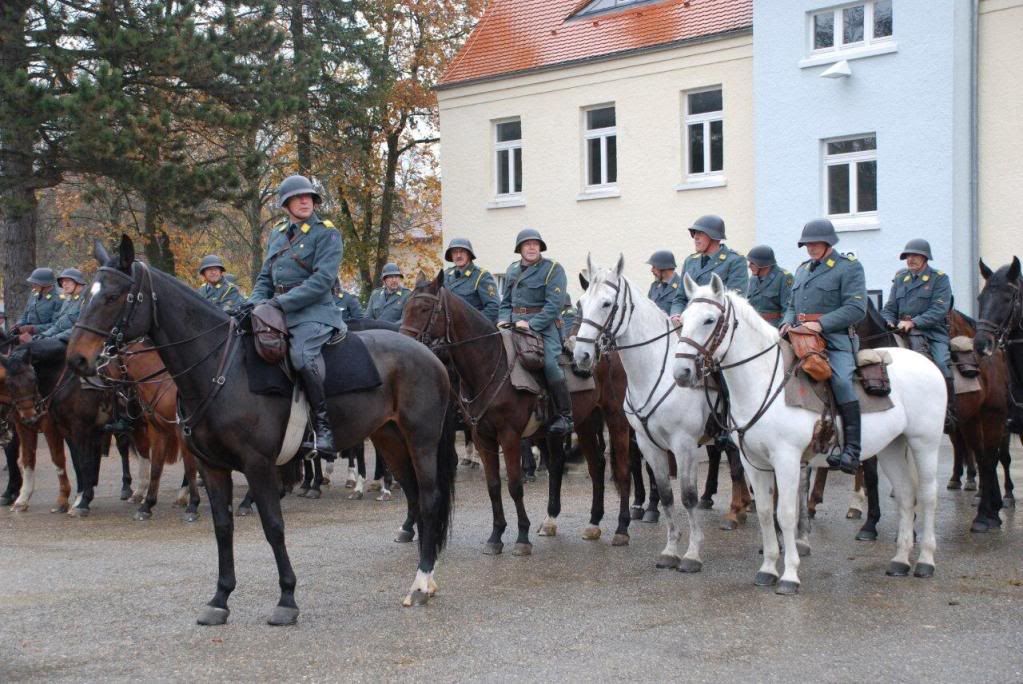
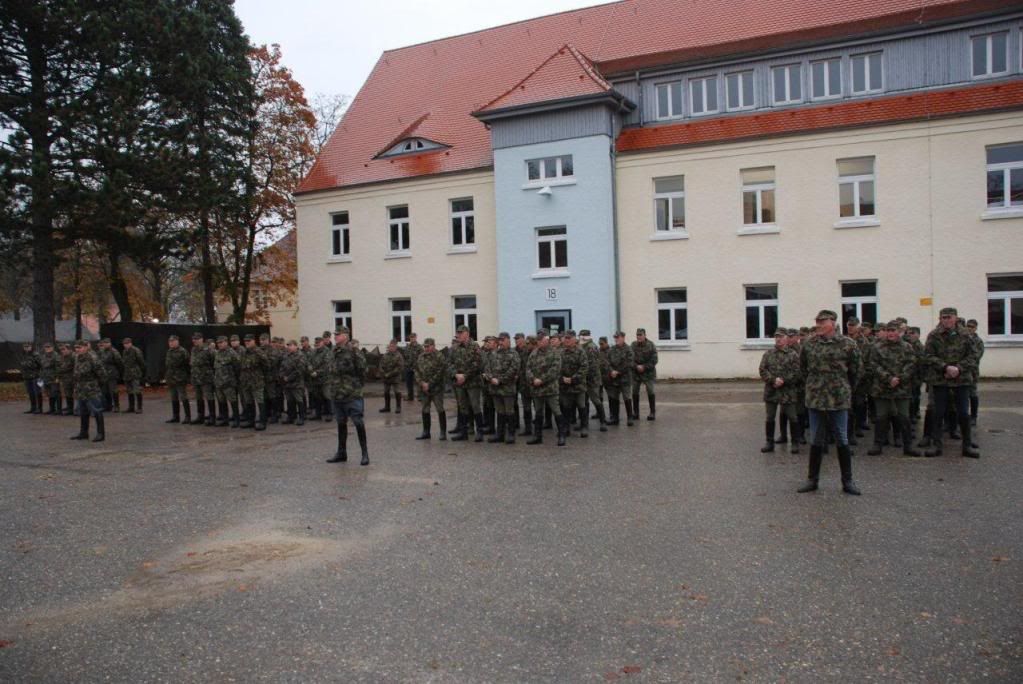
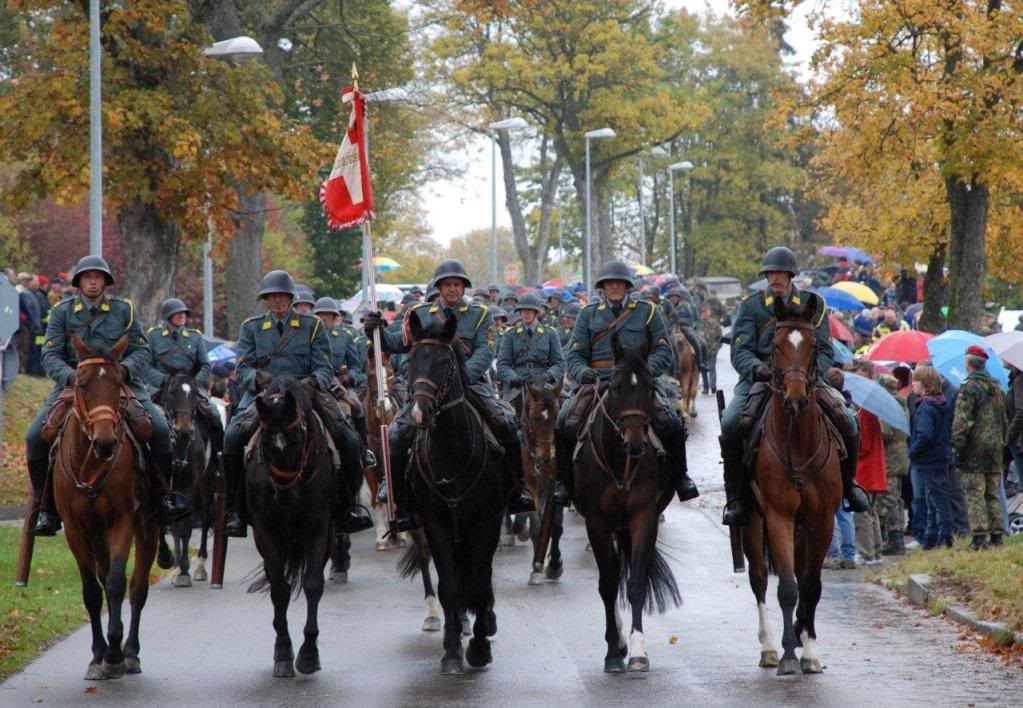
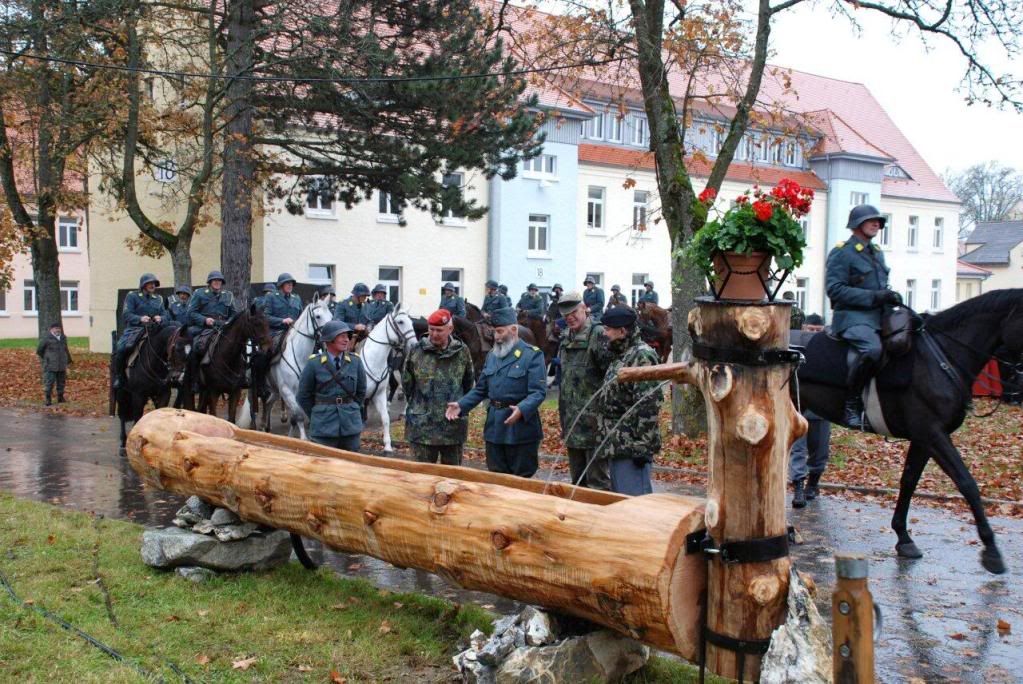
Sehr geehrter Herr Müller
In der Beilage sende ich Ihnen noch die Bilder und Legende von unserem diesjährigen Kalender. (30x45 cm) Der Tarnanzug, welchen wir in Deutschland getragen haben, hat nichts mit der Kavallerie zu tun. Den haben wir nur zur Schonung der Uniform getragen.
Noch zu den offenen Fragen:
Die Vollpackung (Sattel mit allem drum und dran, inkl. Munition) wiegt zirka 40 Kilo. Das Sturmgewehr mit vollem Magazin ist schon 8 kg. Wenn der Reiter voll Ausgerüstet ist, ergibt das ein Gewicht von 110-120 kg, die das Pferd tragen musste.
Bei den Tragtieren mit den Raketenrohren und Raketen in den Seitenlasten gibt das ungefähr 100 kg. Dasselbe Gewicht gibt es bei dem Tragtier mit der Mg-Lafette und den vollen Munitionskisten in den Seitenlasten.
Zu beachten ist, bei den Tragtieren sind das tote Lasten, deshalb ist diese Last vom Gewicht her für das Tragtier etwa gleich wie bei den Reitpferden mit dem beweglichen Reiter.
Für weiter Fragen stehe ich weiterhin zur Verfügung.
Mit freundlichen Grüssen aus der Schweiz
Ulrich Lehmann